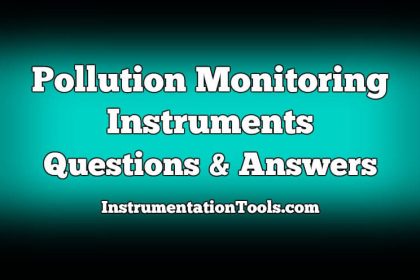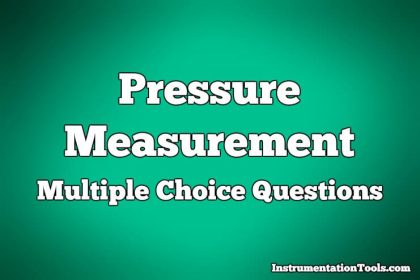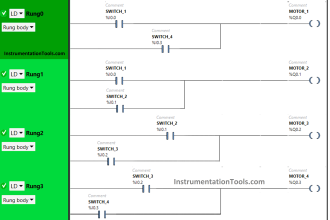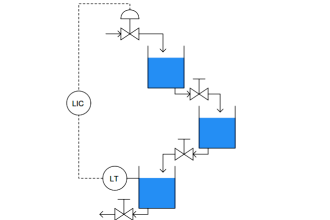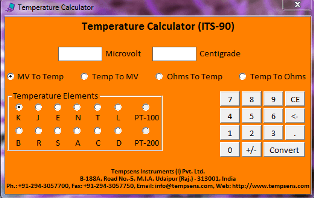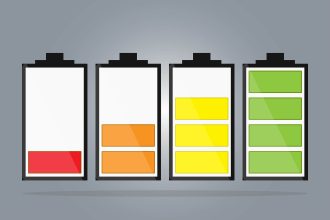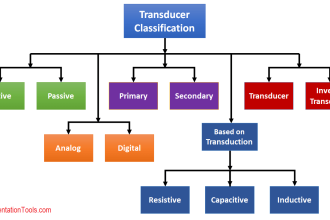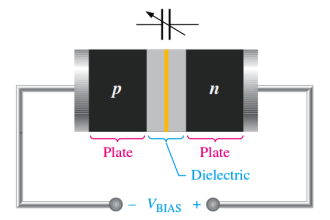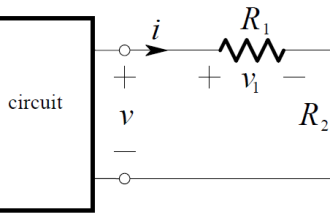Realization of Basic Compensators
1. Which of the following is not the correct reason to select feedback compensation over cascaded one?
a) No amplification is required as the energy transfer is from higher to lower level.
b) Suitable devices are not available for compensation(series)
c) It is economical
d) Provides greater stiffness against load disturbances
Answer: c
Explanation: Feedback compensation is the compensation obtained due to feedback and cascade refers to the cascading of blocks in the forward path and feedback compensation is not preferred over cascading as it is ecenomical.
2. Operations performed by pneumatic controllers:
a) Flexible operations
b) High torque high speed operations
c) Fire and explosion proof operation
d) All of the mentioned
Answer: c
Explanation: Pneumatic controllers are the controllers that perform the control action to control the motion related to air and they always perform fire and explosion proof operation.
3. Operations performed by hydraulic controllers:
a) Flexible operations
b) High torque high speed operations
c) Fire and explosion proof operation
d) All of the mentioned
Answer: b
Explanation: Hydraulic controllers are the controllers that perform the control action in which the motion is due to the water and they have high torque and high speed operations.
4. Operations performed by electronic controllers:
a) Flexible operations
b) High torque high speed operations
c) Fire and explosion proof operation
d) All of the mentioned
Answer: a
Explanation: Electronic controllers are the most flexible controller and used over hydraulic and pneumatic controllers and they use the control action where the control is mainly handled by electronic components and can perform flexible operations as of high speed and high torque.
5. The compensator G(s) =5(1+0.3s)/1+0.1s would provide a maximum phase shift of:
a) 20°
b) 30°
c) 45°
d) 60°
Answer: b
Explanation: The two corner frequencies are 1/0.3 and 1/0.1. The maximum phase lead occurs at mid frequency w =10/√ and maximum phase is 30°.
6. Consider the following systems: System 1: G(s) =1/ (2s+1) and System 2: G(s) =1/ (5s+1) The true statement regarding the system is:
a) Bandwidth of the system 1 is greater than the bandwidth of the system 2
b) Bandwidth of the system 1 is lower than the bandwidth of the system 2
c) Bandwidth of both the systems are same
d) Bandwidth of both the systems are infinite
Answer: a
Explanation: For the system 1 B.W. is 0.5 and
For the system 2 B.W. is 0.2
Hence the system 1 is having more bandwidth compared to system 2.
7. With regard to the filtering capacity the lead compensator and lag compensator are respectively:
a) Low pass and high pass filter
b) High pass and low pass filter
c) Both high pass filter
d) Both low pass filters
Answer: b
Explanation: Lead compensator is similar to high pass filter which allows only the high frequencies to pass and rejects all the other and Lag compensator is similar to Low pass filter which allows only low frequencies to pass and rejects other.
8. What is the effect of phase lag compensation on the performance of a servo system?
a) For a given relative stability, the velocity constant is increased
b) For a given relative stability, the velocity constant is decreased
c) The bandwidth of the system is increased
d) The time response is made faster
Answer: a
Explanation: Phase lag compensation is an integrator. It reduces the steady state error.
Velocity constant =1/steady state error
So velocity constant is increased.
9. A composite R-C network yielded the following transfer function when calculated from its components: T(s) = 1+21s+20s2/1+11s+10s2. This network can be used as which one of the following?
a) Phase lead compensator
b) Phase lag compensator
c) Lag lead compensator
d) None of the mentioned
Answer: a
Explanation: T(s) = 1+20s/1+10s.
Since zero is nearer to origin than pole, it is a phase lead compensator.
10. The open loop transfer function of a plant is given as, G(s) =1/s^2-1. If the plant is operated in unity feedback configuration, then the lead compensator that can stabilize the control system is:
a) 10(s-1)/(s+2)
b) 10(s+4)/(s+2)
c) 10(s+2)/(s+10)
d) 10(s+2)/(s+10)
Answer: a
Explanation: G(s) =1/(s-1)(s+1)
The lead compensator C(s) should stabilize the plant as it is similar to the differentiator and the tendency of it is to stablize the system by increasing the damping hence remove the first term so only option (a) satisfies.




